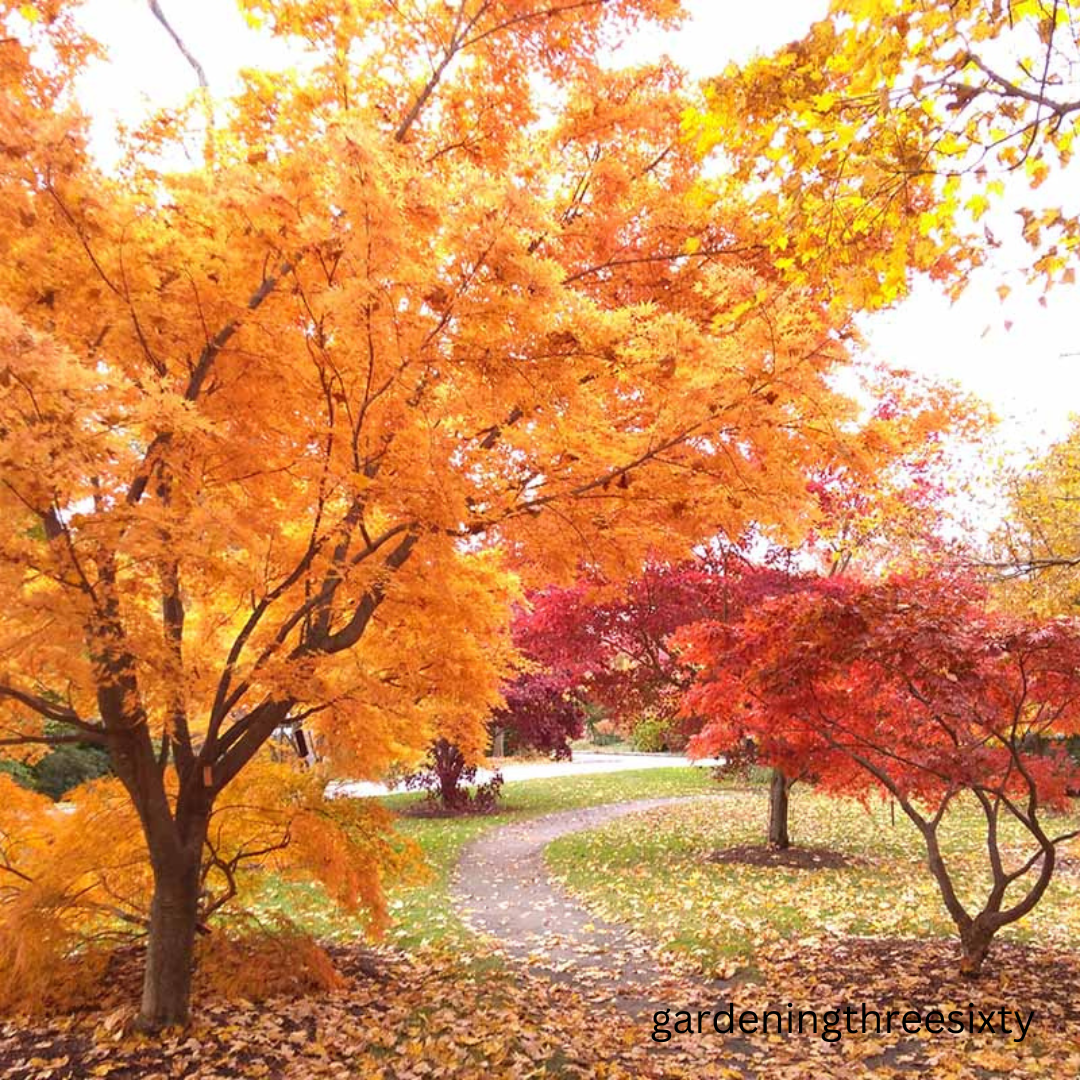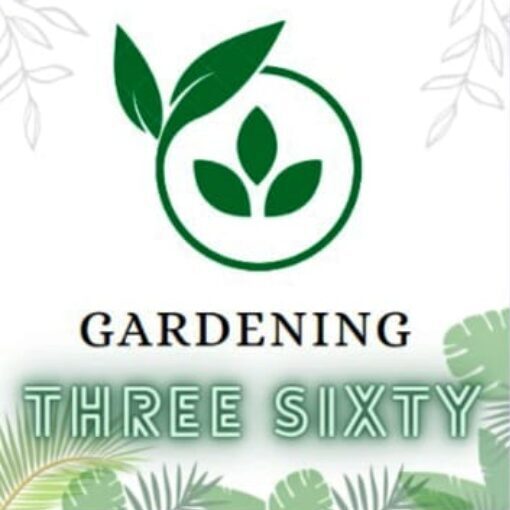Trees with yellow leaves, have you ever noticed a tree boasting a vibrant display of yellow leaves? While most trees wear a crown of green, some species or even individual trees might surprise you with a golden hue. This phenomenon can tell a fascinating story about the tree’s life.
The most common reason for yellow leaves is the changing seasons. In temperate regions, autumn arrives with cooler temperatures, prompting trees to prepare for winter. They withdraw chlorophyll, the pigment responsible for their green color, from their leaves. This reveals hidden pigments like carotenoids, resulting in a stunning display of yellow, orange, and red.
However, yellow leaves can also signal a tree facing challenges. Nutrient deficiencies, particularly a lack of iron, can disrupt chlorophyll production, causing leaves to turn yellow. Similarly, underwatering or overwatering can stress a tree, leading to yellowing leaves as a last-ditch effort to conserve resources.

Seasonal Changes Why Leaves Turn Yellow
As summer’s warmth wanes and days shorten, a subtle alchemy begins within the leaves of many trees. Chlorophyll, the pigment that gives leaves their vibrant green color and allows them to capture sunlight for energy production, starts to break down. This breakdown unveils hidden carotenoids, pigments responsible for the yellows, oranges, and reds we associate with fall foliage. But why does this happen?
One reason is a survival tactic. As winter approaches, with less sunlight and colder temperatures, trees prioritize resource conservation. By breaking down chlorophyll production, they reallocate those resources toward strengthening roots and preparing for dormancy. Additionally, the breakdown products of chlorophyll act as antifreeze, protecting the remaining tissues during chilly nights.
Common Tree Species with Yellow Leaves
Many trees transform into beacons of sunshine come fall. Hickories, ash, and some maples like the striped maple burst into vibrant yellows. The tulip tree, also known as the yellow poplar, lives up to its name with a dazzling golden display.
Even some oaks, like the white oak, chestnut oak, and bear oak, join the yellow party. Sassafras, sweetgum, beech, and birch trees add their own unique shades of yellow to the autumn palette. Even the sycamore doesn’t miss out, bringing a bright yellow hue to the cooler months.
Maple Trees with Yellow Leaves
vibrant, sap, winged seeds, colorful foliage, autumn hues, syrup, ornamental, stately, branching, shade provider, palmate leaves, lobed, serrated edges, twirling descent, helicopter seeds, samaras, keys, woody, drought tolerant, slow-growing, fast-growing, adaptable, acidic soil, wildlife habitat, nitrogen fixer, understory tree, pioneer species, fire-resistant, hardwood, furniture, veneer, musical instruments, bowls, crafts, bonsai, Asia, Europe, North Africa, park favorite, street tree, vibrant cityscapes, changing seasons, fall spectacle, national symbol, Canada, Japan, Vermont, maple syrup production.

Ginkgo Trees with Yellow Leaves
Ancient, biloba, deciduous, fan-shaped, fragrant (fruit), Ginkgoaceae, green, horticultural, insects (resistant), revered, symmetrical, temple (gardens), unique, veins, yellow (fall foliage).
Birch Trees with Yellow Leaves
Deciduous, hardwood, temperate, boreal, pioneer species, slender branches, pyramidal crown, alternate leaves, toothed margins, egg-shaped, triangular, pointed, catkins, wind-pollinated, monoecious, papery bark, horizontal lenticels, peeling bark, white, black, gray, yellow, silver, ornamental, landscaping, short-lived, birch borer, disease resistant, heat tolerant, golden yellow, wildlife habitat, food source, nesting sites, canopy, understory, shade tolerant, full sun, well-drained soil.
Aspen Trees with Yellow Leaves
Shimmering bark, tremulous leaves, vibrant canopy, ethereal glow, autumnal brilliance, interconnected roots, clonal colony, windswept silhouette, mountain majesty, whispering grove, sun-dappled forest, resilient survivor, ancient wisdom, pioneer species, wildlife haven, ecological keystone, understory haven, vibrant ecosystem, golden tapestry, fluttering dance.
Elm Trees with Yellow Leaves
Towering sentinels, elms unfurl their lacy canopies, casting dappled shade on verdant lawns. In spring, delicate blooms adorn their branches, a fleeting burst of white against the awakening canvas of green. Throughout summer, the rustling leaves whisper secrets in the breeze, a symphony for the soul.
Geographical Distribution for Trees with Yellow Leaves
There isn’t a single “yellow leaves tree.” Many trees turn yellow in autumn due to a pigment called chlorophyll breaking down. This process reveals hidden yellow pigments already present in the leaves. The geographical distribution of these yellow-in-fall trees varies depending on the species.
North America and East Asia boast a wider variety than Europe, possibly due to factors like insects, climate, and past glaciations. You’ll find yellow-leaved trees in diverse habitats, from sunny mountain slopes to sprawling forests. So, next fall, take a moment to appreciate the golden hues – they’re a fascinating sign of change, not just a single tree’s signature color.

The Role of Chlorophyll and Carotenoids in Leaf Coloration of Trees with Yellow Leaves
Lush green leaves owe their vibrant color to chlorophyll, a pigment that absorbs blue and red wavelengths of light, reflecting green back to our eyes. But chlorophyll isn’t the only player. Carotenoids, another pigment group, are always present but masked by chlorophyll.
These carotenoids, responsible for the yellows and oranges of carrots and peppers, exist within leaves as well. When autumn arrives and days shorten, chlorophyll production slows and eventually ceases. As chlorophyll breaks down, the hidden carotenoids are unveiled, transforming leaves into a fiery display of yellows, oranges, and reds.
This colorful spectacle is a reminder of the fascinating interplay between pigments that paints the plant world in such a diverse palette.
Environmental Factors Influencing Leaf Color of Trees with Yellow Leaves
The vibrant tapestry of leaves owes its beauty to a play between pigments and environmental factors. Sunlight, the lifeblood of plants, dictates which pigments dominate. Leaves bathed in ample light produce more chlorophyll, the green pigment essential for photosynthesis.
But as daylight hours shorten in fall, chlorophyll production wanes, revealing a hidden world of carotenoids (yellows and oranges) and anthocyanins (reds and purples) already present in the leaves. Temperature and water also play a role.
Crisp autumn nights and adequate summer moisture enhance color development, while stress from drought or extreme heat can lead to muted tones or premature leaf drop. Even subtle variations in soil nutrients can influence the final palette, making each fall display a unique and fleeting masterpiece.
Cultural and Symbolic Significance of Trees with Yellow Leaves
Yellow leaves, a canvas painted by autumn, hold a wealth of symbolism across cultures. They represent the changing seasons, a time of transition and letting go. In some traditions, like Japan, the falling yellow leaves signify impermanence and the beauty of life’s fleeting moments. In China, they symbolize wisdom accumulated over time, like the golden hue enriching the landscape.
In harvest festivals, yellow leaves can represent abundance and reaping what’s been sown. Yet, they can also carry a melancholic tone, reminding us of decline and the inevitability of death. But even in decay, there’s beauty, as yellow leaves nourish the earth for future growth.

Landscaping and Gardening Trees with Yellow Leaves
Yellow-leaved trees can bring a vibrant burst of color to your landscape, adding cheer in both spring and fall. Blooming varieties like the yellow trumpet tree offer a sunny welcome in warmer climates, while classic choices like maples and ginkgos put on a dazzling display of golden hues come autumn.
These trees can be stunning focal points, lining pathways, or creating a colorful backdrop for other plantings. Consider their mature size and sunlight needs when choosing a spot, and enjoy the cheerful pop of color they bring to your garden year after year.
Care and Maintenance for Trees with Yellow Leaves
Check the soil moisture – stick a screwdriver in, if it’s hard to push in, deep water is needed. Ensure proper drainage to avoid root rot. Analyze sunlight – some trees need more sun, while others prefer shade.
Consider nutrient deficiencies and if needed, use targeted fertilizers like iron for green veins and yellow leaves. Watch out for pests and diseases – look for signs of insect damage or fungal growth. If unsure about the cause, consult a certified arborist for a proper diagnosis and treatment plan.
Pests and Diseases Affecting Trees with Yellow Leaves
Yellowing leaves on your tree can signal trouble from tiny sap-sucking insects like aphids or larger chewers like caterpillars. Fungal diseases can also cause leaves to lose their chlorophyll, turning them yellow. Beyond pests and diseases, nutrient deficiencies, and underwatering.
Even overwatering can lead to yellowing. To diagnose the culprit, take a closer look at the leaves and surrounding soil. If pests are present, removing them or using insecticidal soap might be the solution. For diseases, fungicides may be necessary. Addressing watering habits and nutrient deficiencies can also bring your tree back to green health.
Famous Yellow-Leaved Trees Around the World
Fall brings a vibrant transformation to many trees. North America boasts the dazzling golden display of quaking aspens and the rich yellow leaves of tulip trees. Europe witnesses the fiery yellow hues of European beeches, while Asia sees the coppery-yellow transformation of the Tibetan cherry tree.
Even the ginkgo, a living fossil with unique fan-shaped leaves, explodes into a brilliant yellow in China and Japan. These vibrant displays, from delicate aspen groves to ancient ginkgo alleys, turn landscapes into breathtaking masterpieces.

Conclusion for Trees with Yellow Leaves
The sight of trees adorned with yellow leaves can evoke contrasting emotions. Autumn, it signifies a vibrant display of nature’s changing seasons, a prelude to winter’s slumber. The leaves, having fulfilled their role in photosynthesis, transform into a dazzling spectacle of gold, orange, and red before gracefully falling to create a colorful carpet beneath. Yet, yellowing leaves can also indicate stress.
A lack of nutrients, extreme temperatures, or even disease can cause leaves to lose their chlorophyll, leading to premature yellowing. So, while yellow leaves often paint a breathtaking scene, their presence can be a silent indicator of the tree’s health, requiring further observation to understand the true story behind their golden hue.
FAQ’s Relating Trees with Yellow Leaves
What is the name of the tree with yellow leaves?
There are many trees that boast beautiful yellow leaves, depending on the season and location. During autumn, countless varieties like maples, birches, and poplars transform into vibrant displays of gold.
What do yellow leaves mean on a tree?
Yellow leaves on a tree can signal a shift in seasons, with vibrant green surrendering to hues of gold as autumn approaches.
How do I fix yellow leaves on my tree?
There are several reasons why your tree’s leaves might be turning yellow, and diagnosing the culprit is the first step to reviving your leafy friend.
Will fertilizer help yellow leaves?
Yellow leaves can be a puzzling sight for plant parents. While fertilizer might seem like the answer, it’s crucial to diagnose the cause first. Lack of nutrients, underwatering, overwatering
Can a yellow leaf turn green again?
In the vibrant world of plants, leaves boast a beautiful green courtesy of chlorophyll, the pigment responsible for photosynthesis.
For more information, have a glance
- Varieties of Pomegranate Tree
- The Ultimate Guide to Guava Seed Germination Success
- How To Grow an Orange Tree From an Orange
- Healthy Fruits that Grow on Vines
- How to Grow Best Cold Hardy Avocado Trees
- Evergreen fruit trees
- Hanging Baskets
- Companion Planting for Spinach
- Delphinium Pacific Giant
- Guideline for Best Grass Seed for Florida
- Spraying Fruit Trees
- Christmas Jewel Holly
- Baby Jade Boxwood
